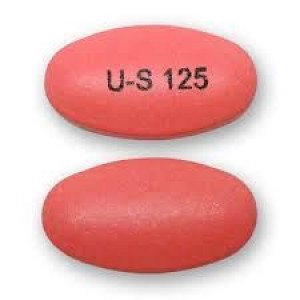 Welcome
Welcome
“May all be happy, may all be healed, may all be at peace and may no one ever suffer."
Healthcare Pharmaceuticals Ltd.
Solivo 375mg + 20mg

Generic for Diseases
- Ankylosing spondylitis
- Arthritis
- Joint stiffness
- Musculoskeletal and joint pain
- Osteoarthritis / degenerative arthritis
- Pain
- Pain and inflammation
- Rheumatoid Arthritis (RA)
- Spondylitis
This consists of an immediate release Esomeprazole Magnesium layer & an enteric-coated Naproxen core. As a result, Esomeprazole is released first into the stomach, prior to the dissolution of Naproxen in the small intestine.
Naproxen is a NSAID with analgesic & antipyretic properties. The mechanism of action of Naproxen is to inhibit the prostaglandin synthesis. Esomeprazole is a proton pump inhibitor that suppresses gastric acid secretion by specific inhibition of the H+/k+ -ATPase in the gastric parietal cell by acting specifically on the proton pump, Esomeprazole blocks the final step in acid production, thus reducing gastric acidity.
Naproxen & Esomeprazole is indicated for the relief of signs & symptoms of-
- Osteoarthritis
- Rheumatoid arthritis
- Ankylosing spondylitis &
- To decrease the risk of developing gastric ulcers in patients at risk of developing NSAID-associated gastric ulcers.
Carefully consider the potential benefits & risks of this tablet & other treatment options before deciding to use this tablet. Use the lowest effective dose for the shortest duration consistent with individual patient treatment goals. If a dose of Esomeprazole lower than a total daily dose of 40 mg is more appropriate, a different treatment should be considered.
Rheumatoid Arthritis, Osteoarthritis and Ankylosing Spondylitis-
- Adults: One tablet twice daily of either: 375 mg naproxen/20 mg of esomeprazole; or 500 mg naproxen/20 mg of esomeprazole
Juvenile Idiopathic Arthritis in Adolescent Patients 12 Years of Age & Older-
- Weight greater than 50 kg: 375 mg naproxen/20 mg of esomeprazole; or 500 mg naproxen/20 mg of esomeprazole
- Weight 38 kg to less than 50 kg: One tablet twice daily of 375 mg naproxen/20 mg of esomeprazole.
Administration
Do not split, chew, crush or dissolve the tablet. This tablet is to be taken at least 30 minutes before meals.
- Known hypersensitivity to any component of this tablet or substituted benzimidazoles.
- History of asthmay urticaria or other allergic-type reactions after taking aspirin or other NSAIDs.
- Use during the peri-operative period in the setting of coronary artery bypass graft (CABG) surgery.
In general, this preparation is well tolerated. The most common adverse reactions in clinical trials (>5%): erosive gastritis, dyspepsia, gastritis, diarrhea, gastric ulcer, upper abdominal pain, nausea etc.
Overdose Effects
There is no clinical data on overdosage with this tablet.
Overdose of Naproxen: Significant naproxen overdosage may be characterized by lethargy, drowsiness, epigastric pain, abdominal discomfort, heartburn, indigestion, nausea, transient alteration in liver function, hypoprothrombinemia, renal dysfunction, metabolic acidosis, apnea, vomiting etc.
Overdose of Esomeprazole: The major signs of acute toxicity were reduced motor activity, changes in respiratory frequency, tremor and intermittent clonic convulsions etc.
Patients with known CV disease/risk factors may be at greater risk. This tablet should be used with caution in patients with fluid retention or heart failure.
Use in Special Populations
Elderly patients: Studies indicate that although the total plasma concentration of naproxen is unchanged, the unbound plasma fraction of naproxen is increased in the elderly. Use caution when high doses are required & some adjustment of dosage may be required in elderly patients. As with other drugs used in the elderly use the lowest effective dose.
Patients with Moderate to Severe Renal impairment: Naproxen-containing products are not recommended for use in patients with moderate to severe or severe renal impairment (creatinine clearance <30 ml/min).
Hepatic insufficiency: Monitor patients with mild to moderate hepatic impairment closely & consider a possible dose reduction based on the Naproxen component of this tablet. This is not recommended in patients with severe hepatic impairment because Esomeprazole dosage should not exceed 20 mg daily in these patients.
Pregnancy & Lactation
Pregnancy category C. In late pregnancy, it should be avoided because it may cause premature closure of the ductus arteriosus. This tablet should not be used in nursing mothers due to the Naproxen component.
Solivo 375mg + 20mg and more Available Brands
Zeropain 60mg / 2ml
Silinor-M 50mg + 500...
Bevacimab 400mg / 16...
Bontiv 750mg + 50...
Tobrel 0.30%
Syndol 50mg
Stener 300mg
Cynta 50mg
...
To be happy, beautiful, healthy, wealthy, hale and long-lived stay with DM3S.